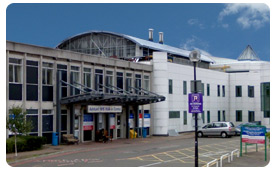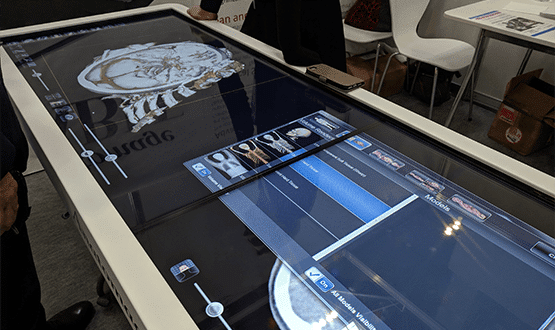Very well, alone
- 12 August 2010

Last summer, trusts across the South of England breathed a sigh of relief.
After months of waiting for information about what would happen after Fujitsu’s departure from the National Programme for IT in the NHS, the Department of Health announced that the 52 trusts not covered by a contract with BT would receive centrally funded ‘acute systems of choice.’
DH director general of informatics, Christine Connelly, indicated that it was all systems go, with a rushed Additional Supply Capability and Capacity (ASCC) event in November to get the procurements moving, with the aim of having them completed by the end of March 2010. Then, silence.
Last week, E-Health Insider reported that it is extremely unlikely that southern acute trusts outside London will receive any central funding and there is only a slight chance that community and mental health will see any cash.
Some trusts – and suppliers, who had put effort into the ASCC event and process – reacted with disappointment. However, Ashford and St Peter’s Hospitals NHS Trust says that in many ways it is a “relief” that ASCC has more or less collapsed.
Surviving the NPfIT years
John Headley, finance and information director, says: “We’ve been told by the strategic health authority that if such monies do become available they will be focused on community as a first call and [we should] not expect any investment coming into the acute side.”
However, John Aird, interim director of IM&T, adds: “It’s a shame it wasn’t done four years ago; but looking around us now it’s a relief. If you’re a very small organisation, you’ve got to be supported by a local service provider. If you’re a large organisation, you can go out and buy the best.
“But if you’re in the middle it’s a compromise. If there’s something good and advantageous then you think hard on it; but we’ve had nothing like that offered to us.”
The trust says that it has no regrets about not becoming an NPfIT early adopter, which would have put it in the frontline for implementing one of the large electronic patient records systems from major suppliers that the programme was contracted to deliver.
Headley says: “My take on it is that we haven’t done so badly. For trusts that have been through big implementations it’s been traumatic and a big upheaval; it’s a whole load of risk that we have avoided.
“It’s a shame not to have state of the art technology, but we’ve conserved an old generation system platform for future growth. Now we can plot our own destiny. The board can decide where it’s going, rather than a one size fits all being parachuted down.”
Aird adds: “We’re not saddled with the cost and implications of being one of the guinea pigs of a big bang implementation.”
Investing for the future
Ashford and St Peter’s commissioned an external review of what its next steps should be in the light of the election of a new government.
The review, carried out by independent consultant, Mike Haynes, concluded that it is at a “cross-roads” in terms of its IT strategy and that it now needs to “shift up a gear from tactical to long term planning” by “falling back on its own resources.”
As a result, the trust has decided to continue to use its CLINiCOM patient administration system from iSoft, which it has been assured will be supported for at least five years. It will also look to integrate it with other systems as more money becomes available.
Aird adds: “We recognise that as we develop the strategy, nothing’s going to change in next 12-24 months in relation to the programme, so we need to go on exploiting what we’ve got until the future becomes clearer.”
Headley agrees: “We can’t afford £7-10m for a Cerner implementation, for example, but by the same token we’re a sound and healthy organisation and we can afford £1-2m per year to spend on IT that fits with our strategy.”
The Haynes review has already led to the business case being passed for a £1m Bluespier theatre system that will be used in both of the trust’s main sites. There will also be a £500,000 wireless network tender in addition to a number of smaller investments.
Headley says: “We’re certainly not in a paralysis situation. In fact, it’s really just business as usual. The iSoft PAS is good for another half a dozen years; it does what it does and it does it well. We’re not desperate for anything.”
The trust is also looking at electronic document management of clinical notes and exploiting products that it previously didn’t consider. These include such as iSoft Patient Centre, which it says provides a “GUI adjunct to CLINiCOM” that is less clunky and more user friendly for staff.
Headley adds: “We’ve also started getting real time use of PAS, ADT on wards and discharge letters – all the basic stuff – rather than focusing on the expectation of a major EPR. That’s definitely not what are focus will be in next few years.”
Very well, alone
The trust has commissioned another external company, Health Systems, to put together an IT strategy, based on the previous review’s recommendations and the changes to NPfIT.
Aird says that the strategy will be finalised in the autumn. “NPfIT is all but demised, so we need to look at the exploitation phases. I think there’s an element of sitting on the fence but making sure that that’s a very robust fence to sit on while we wait for clarity.”
Until then the trust is making sure that its informatics strategy supports its application to receive foundation trust status as well as aligning itself with the recent health white paper, Liberating the NHS.
Headley says: “We’ve had a lot of focus on the businesses intelligence side and that is definitely the right direction. Mike [Haynes] has challenged us to raise our game and for the informatics function to get really close to the internal customers.
“One area that [health secretary Andrew] Lansley is emphasising is that foundation trusts have to be autonomous and make their own decisions and that’s exactly what we’re talking about in terms of IT.”
Aird concludes: “We’ll let NPfIT sort itself out and look at it in the next two, three or four years, until then we’re happy on our own.”




